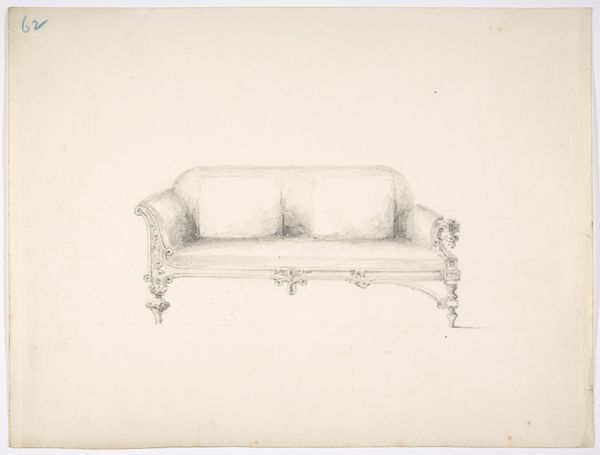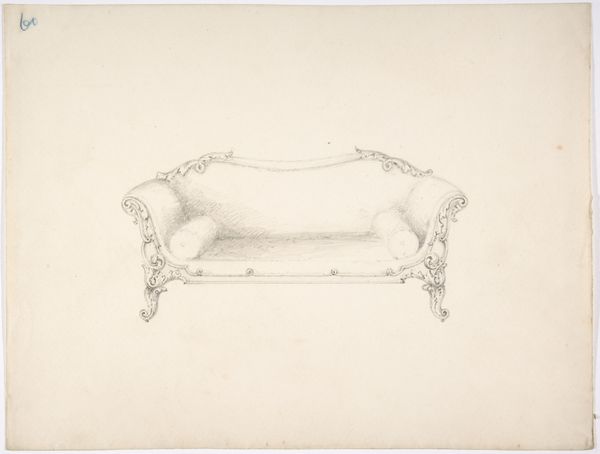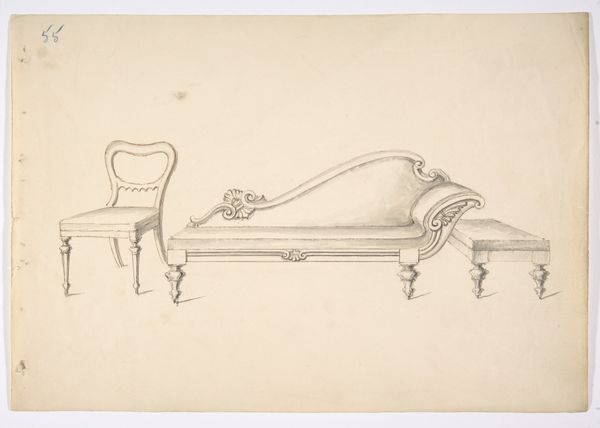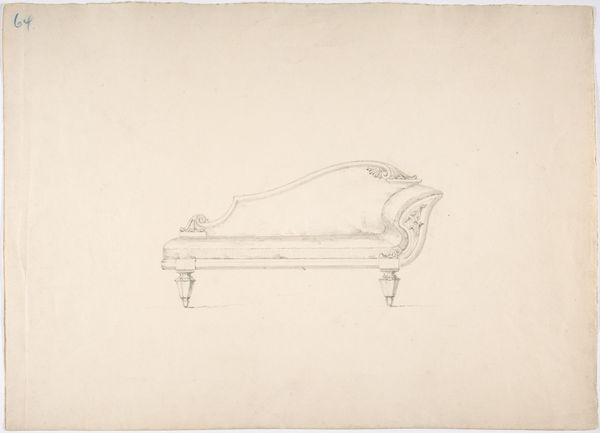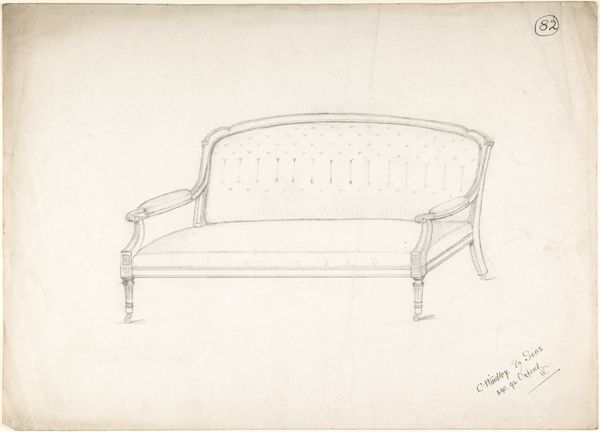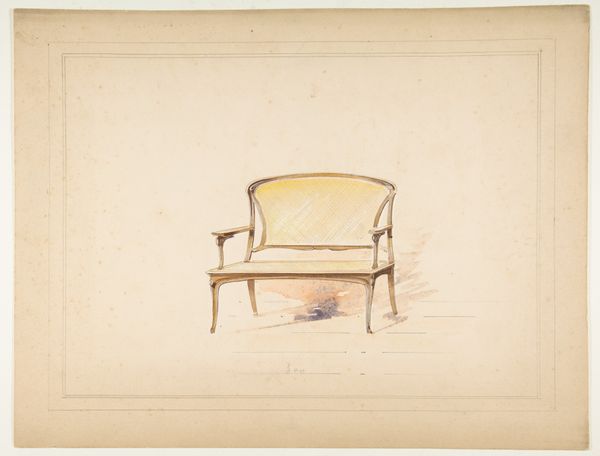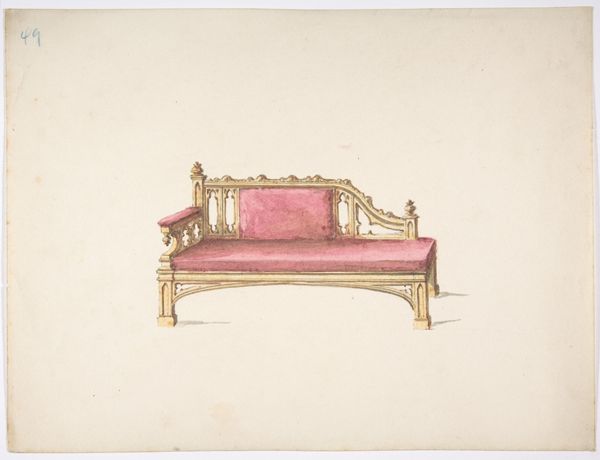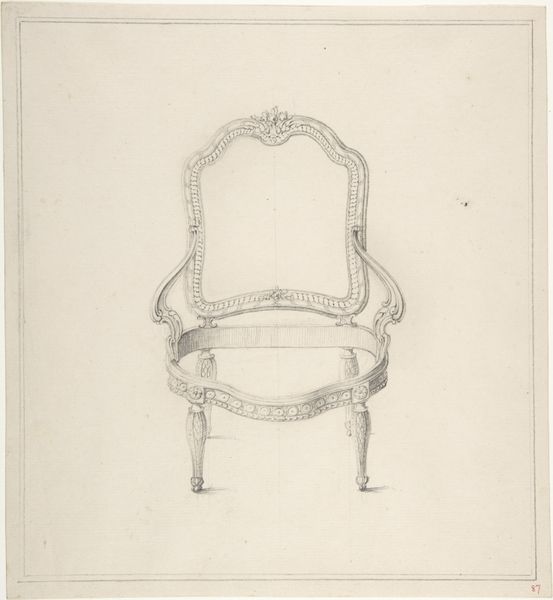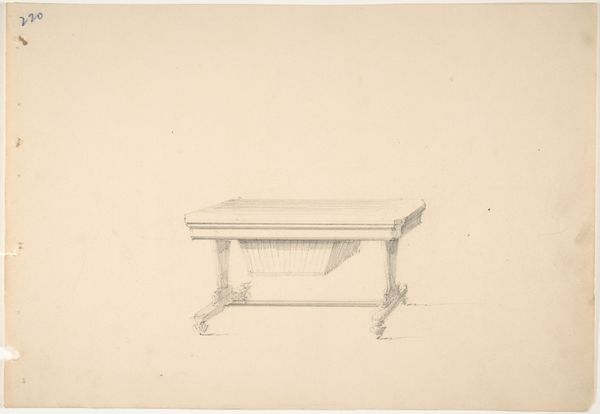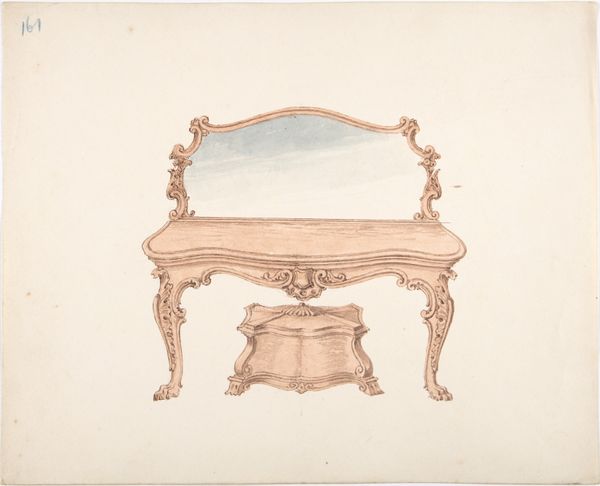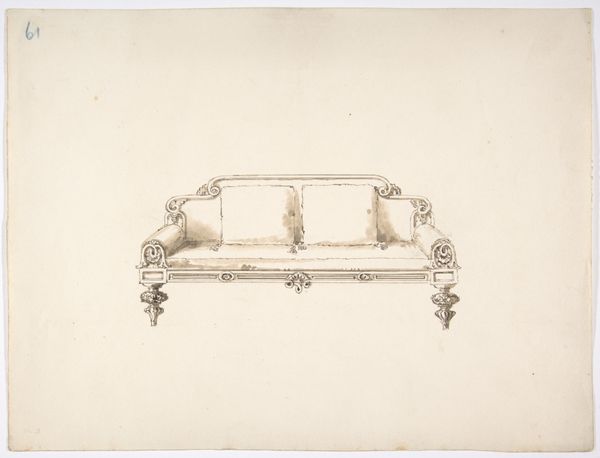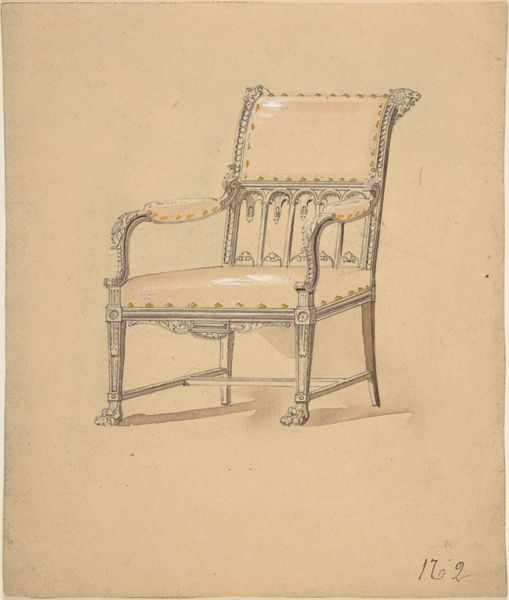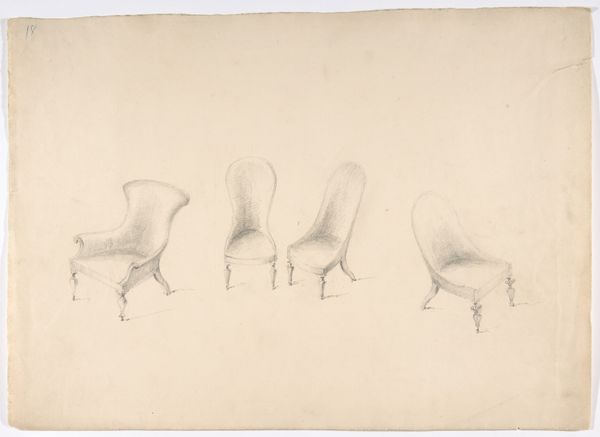
drawing, paper, ink
#
drawing
#
neoclacissism
#
paper
#
form
#
ink
#
pencil drawing
#
line
#
decorative-art
Dimensions: sheet: 9 x 11 7/8 in. (22.8 x 30.2 cm)
Copyright: Public Domain
Curator: Here we have "Design for a Sofa with Wing-like Arms," an ink and paper drawing crafted sometime between 1800 and 1850 by an anonymous artist. What's your first take? Editor: It whispers quiet luxury, doesn't it? Like a secret meeting place for whispered gossip and stolen naps. I’m feeling a Jane Austen novel kind of vibe, all elegant restraint and potential scandal. Curator: Absolutely. The design aligns perfectly with the Neoclassical movement, which saw a resurgence of interest in classical antiquity, influencing not only architecture and fine arts but also, of course, decorative arts like furniture design. The clean lines, the emphasis on symmetry, and the restrained ornamentation all speak to that aesthetic. Editor: Symmetry, yes! The way it’s poised and almost floating. There’s also something about the curves that feels very inviting and then those quirky little feet! They ground it while letting it keep a touch of whimsy. I mean, wouldn’t you just sink right into those cushions? Curator: Indeed, but thinking about function alongside form, consider that the wing-like arms serve not just an aesthetic purpose but also a practical one, offering privacy and protection from drafts – key considerations in the drafty homes of the time. It's fascinating how social conditions and architectural conventions shape even our furniture. Editor: Oh, definitely. And think about who was using it. Was it in a stuffy parlor, mediating serious conversations? Or did kids jump all over it, against their mother's wishes? I can't help but imagine someone writing in her journal here or hiding from a suitor behind those "wings." Curator: It also encourages us to question the narratives around domestic space and the roles assigned within it, perhaps providing a backdrop for both female accomplishment and confinement, depending on who occupied it. Editor: So true. For me, the magic here is in the mystery. What wasn’t drawn into existence or brought to life through its design, who dreamed it, and how did the lives it impacted shape those early dreams. Curator: Ultimately, I find it so fascinating how design can subtly uphold and reflect entire cultural ecosystems of power. Editor: Yes, I love seeing these intimate domestic artifacts that make one pause and imagine the secret lives from the past, with an eye for those things they might not even think we could know from the future.
Comments
No comments
Be the first to comment and join the conversation on the ultimate creative platform.
